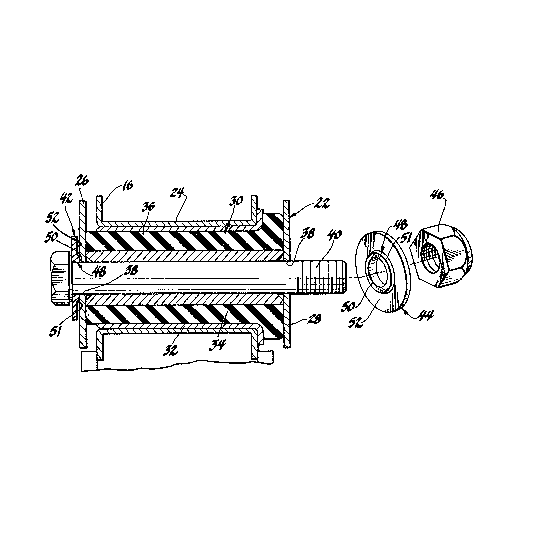Some of the information on this Web page has been provided by external sources. The Government of Canada is not responsible for the accuracy, reliability or currency of the information supplied by external sources. Users wishing to rely upon this information should consult directly with the source of the information. Content provided by external sources is not subject to official languages, privacy and accessibility requirements.
Any discrepancies in the text and image of the Claims and Abstract are due to differing posting times. Text of the Claims and Abstract are posted:
| (12) Patent: | (11) CA 1279357 |
|---|---|
| (21) Application Number: | 1279357 |
| (54) English Title: | PIVOT BUSHING ASSEMBLY APPLICATION |
| (54) French Title: | ENSEMBLE MANCHON ET PIVOT, ET SON EMPLOI |
| Status: | Term Expired - Post Grant |
| (51) International Patent Classification (IPC): |
|
|---|---|
| (72) Inventors : |
|
| (73) Owners : |
|
| (71) Applicants : |
|
| (74) Agent: | GOWLING WLG (CANADA) LLP |
| (74) Associate agent: | |
| (45) Issued: | 1991-01-22 |
| (22) Filed Date: | 1988-03-21 |
| Availability of licence: | N/A |
| Dedicated to the Public: | N/A |
| (25) Language of filing: | English |
| Patent Cooperation Treaty (PCT): | No |
|---|
| (30) Application Priority Data: | ||||||
|---|---|---|---|---|---|---|
|
PIVOT BUSHING ASSEMBLY APPLICATION
Abstract of the Disclosure:
A suspension rubber bushing pivot installation
for automobiles and the like incorporates an upsetting
washer and expedients associated therewith in the
bushing proper which coact under tightening of a
fastener bolt to enhance the rattle-free frictional
engagement of the latter with its supporting chassis
bracket.
Note: Claims are shown in the official language in which they were submitted.
Note: Descriptions are shown in the official language in which they were submitted.

2024-08-01:As part of the Next Generation Patents (NGP) transition, the Canadian Patents Database (CPD) now contains a more detailed Event History, which replicates the Event Log of our new back-office solution.
Please note that "Inactive:" events refers to events no longer in use in our new back-office solution.
For a clearer understanding of the status of the application/patent presented on this page, the site Disclaimer , as well as the definitions for Patent , Event History , Maintenance Fee and Payment History should be consulted.
| Description | Date |
|---|---|
| Inactive: Expired (old Act Patent) latest possible expiry date | 2008-03-21 |
| Inactive: IPC from MCD | 2006-03-11 |
| Grant by Issuance | 1991-01-22 |
There is no abandonment history.
| Fee Type | Anniversary Year | Due Date | Paid Date |
|---|---|---|---|
| MF (category 1, 7th anniv.) - standard | 1998-01-22 | 1998-01-08 | |
| MF (category 1, 8th anniv.) - standard | 1999-01-22 | 1999-01-08 | |
| MF (category 1, 9th anniv.) - standard | 2000-01-24 | 2000-01-07 | |
| MF (category 1, 10th anniv.) - standard | 2001-01-22 | 2001-01-08 | |
| MF (category 1, 11th anniv.) - standard | 2002-01-22 | 2002-01-03 | |
| MF (category 1, 12th anniv.) - standard | 2003-01-22 | 2003-01-02 | |
| MF (category 1, 13th anniv.) - standard | 2004-01-22 | 2004-01-02 | |
| MF (category 1, 14th anniv.) - standard | 2005-01-24 | 2005-01-06 | |
| MF (category 1, 15th anniv.) - standard | 2006-01-23 | 2006-01-05 | |
| MF (category 1, 16th anniv.) - standard | 2007-01-22 | 2006-12-08 |
Note: Records showing the ownership history in alphabetical order.
| Current Owners on Record |
|---|
| GENERAL MOTORS CORPORATION |
| Past Owners on Record |
|---|
| CASIMIR KRAJEWSKI |
| RANDOLPH I. MELVILLE |
| WILLIAM W. PORTER |